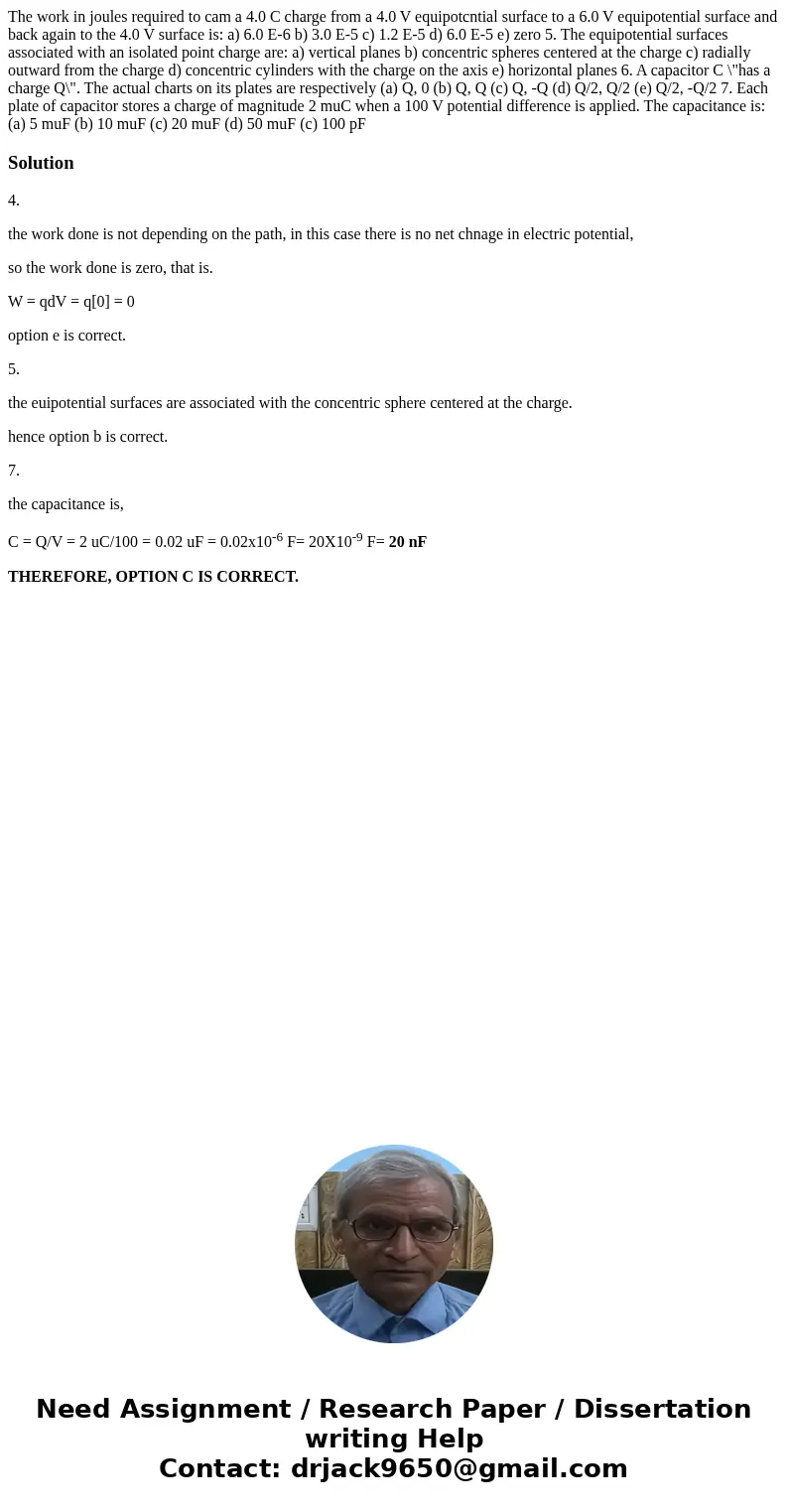The work in joules required to cam a 40 C charge from a 40 V
The work in joules required to cam a 4.0 C charge from a 4.0 V equipotcntial surface to a 6.0 V equipotential surface and back again to the 4.0 V surface is: a) 6.0 E-6 b) 3.0 E-5 c) 1.2 E-5 d) 6.0 E-5 e) zero 5. The equipotential surfaces associated with an isolated point charge are: a) vertical planes b) concentric spheres centered at the charge c) radially outward from the charge d) concentric cylinders with the charge on the axis e) horizontal planes 6. A capacitor C \"has a charge Q\". The actual charts on its plates are respectively (a) Q, 0 (b) Q, Q (c) Q, -Q (d) Q/2, Q/2 (e) Q/2, -Q/2 7. Each plate of capacitor stores a charge of magnitude 2 muC when a 100 V potential difference is applied. The capacitance is: (a) 5 muF (b) 10 muF (c) 20 muF (d) 50 muF (c) 100 pF
Solution
4.
the work done is not depending on the path, in this case there is no net chnage in electric potential,
so the work done is zero, that is.
W = qdV = q[0] = 0
option e is correct.
5.
the euipotential surfaces are associated with the concentric sphere centered at the charge.
hence option b is correct.
7.
the capacitance is,
C = Q/V = 2 uC/100 = 0.02 uF = 0.02x10-6 F= 20X10-9 F= 20 nF
THEREFORE, OPTION C IS CORRECT.

 Homework Sourse
Homework Sourse